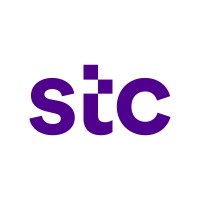
stc
We are a forward-focused digital champion always been focused on innovation and evolution. Our purpose is to create and bring greater dimension and richness to people’s personal and professional lives. With stc, You will always be empowered to focus on delivering what’s next through collaborative and agile ways of working, and a culture that is open to fresh ideas. Transforming the future through impactful digital solutions and mega-projects while fostering our commitment to sustainability. Join a people-centric environment; that cares about maximizing your wellbeing, and is committed to unlocking your potential.






